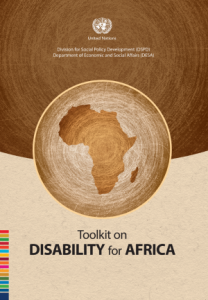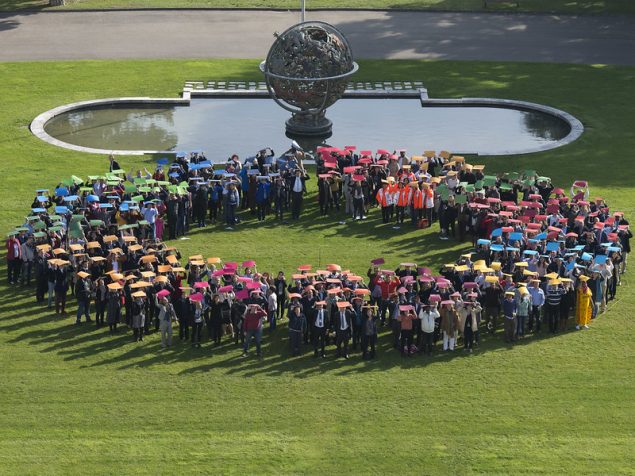This page has been prepared to provide information and updates on the Nepal earthquake of 25 April 2015 and the disability response and situation of persons with disabilities. Over 8 million people have been affected by the massive earthquake and an estimated 1.4 million are in need of food assistance.
- [NEW] Study Report on the Challenges Faced by Persons with Disabilities (PwDs) in Post-Earthquake Nepal (UNDP, May 2016)
- Handicap International’s One Year Impact Infographic
- Handicap International’s Nepal 1-year update: Standing tall again
- Handicap International’s teams continue to provide essential support more than six months after the devastating Nepal earthquake
- Children still at risk three months after devastating quake, UNICEF
- National Federation of the Disabled Nepal (NFDN) Press Release
- Big earthquake hit Nepal and heavy loss of human lives are reported by Kamal Lamicchane
- CBM response
- Handicap International response
- World Federation of the Deaf Regional Secretariat for Asia on Nepal-earthquake
- World Food Programme: Earthquake survivors in Nepal urgently need help. Make an emergency donation now
- #NepalEarthquake
News:
- UN Daily News from the United Nations News Service
- Nepal: UN agencies rush supplies to earthquake survivors amid powerful aftershocks
- UN humanitarian chief announces $15 million emergency fund for Nepal earthquake response
- UN responds to destruction, displacement in wake of Nepal earthquake
Big earthquake hit Nepal and heavy loss of human lives are reported by Kamal Lamichhane, PhD Associate Professor, Center for Research on International Cooperation in Educational Development (CRICED), University of Tsukuba, Japan.
Devastating earthquake with 7.9 magnitute hit Nepal on April 25th, 2015. Most of the areas of the country has been badly affected by this disaster. Death toll has reached nearly 4000 and more than 8 thousands are reported to be injured as of April 27th. As the situation in rural areas is still unclear, it is assumed that the death and injury will further climb. Since the epicenter is in Lamjung and Gorkha District of the country, and the frequency of aftershocks has been very high, it will take several days to get the clear picture of the casualties.
Moreover, Nepal as a poor country remains unprepared to handle a disaster of this kind. While contacting some representatives of the DPOs, I could not obtain any reliable information about the situation of people with disabilities in general except confirming the safety of those representatives. It is difficult at this point to reach out the people with disabilities as the roads are damaged, offices are closed and all are mostly concerned for their own safety. As the disaster is too big and casualties are much higher, gathering reliable information is still posing a challenge.
As in other parts of the world, when the disaster like this occurs, people with disabilities are likely to be affected most due to not having accessible place to be rescued and due to not having proper support system in place for the rescue operation. Though international community has already started offering emergency support, it is equally important that we involve toward disability-inclusive disaster risk reduction program as well as to further expand financial and technical support for the rehabilitation of newly disabled people. Thousands of people have acquired impairment and they are yet not reached, especially in rural areas of Nepal, such as in Gorkha, Dadhing, Nuwakot, Shindhupalchok, Dolakha and so on. Supply of Tents, medicines, food, water, are immediately required. Since Nepal was not prepared on minimizing risk of the disasters like this, people with disabilities, women and children are thought to be more affected at this point. The rescue operation seems not well organized despite the hard efforts of agencies, security forces, civil society, NGOS etc.
- Three months of inclusive action
http://www.cbm.org/Nepal-earthquake-three-months-of-inclusive-response-489024.php - Nepal earthquake response – in pictures
http://www.cbm.org/Nepal-earthquake-in-pictures-486191.php - Questions and answers on the Nepal earthquake, including the importance of ensuring a disability inclusive response.
Facebook updates and stories from CBM:
- http://www.cbm.org/Nepal-earthquake-Questions-Answers-484259.php
- https://www.facebook.com/cbm.international/posts/840348359335618:0
- https://www.facebook.com/cbm.international/posts/841449855892135:0
- https://www.facebook.com/cbm.international/posts/842059589164495:0
- http://blog.cbm.org/my-first-relief-camp-in-the-aftermath-of-nepal-earthquake/
- http://www.cbm.org/Nepal-earthquake-484174.php
https://www.facebook.com/cbm.international/posts/848249171878870:0
Handicap International response
- Two-month Report
- https://www.facebook.com/HandicapInternationalUnitedStates/posts/10153184417725675
- https://www.facebook.com/HandicapInternationalUnitedStates/posts/10153188230835675:0
- https://www.facebook.com/HandicapInternationalUnitedStates/posts/10153190627095675
- https://www.facebook.com/HandicapInternationalUnitedStates/posts/10153193274590675:0
- https://www.facebook.com/HandicapInternationalUnitedStates/posts/10153193274590675:0
- https://www.facebook.com/HandicapInternationalUnitedStates/posts/10153239926145675
- https://www.facebook.com/media/set/?set=a.10153236076270675.1073741860.357889445674&type=1
- https://www.facebook.com/HandicapInternationalUnitedStates/posts/10153242014075675
- https://www.facebook.com/HandicapInternationalUnitedStates/posts/10153244843985675
- https://www.facebook.com/HandicapInternationalUnitedStates/posts/10153242324585675
International Deaf Emergency




